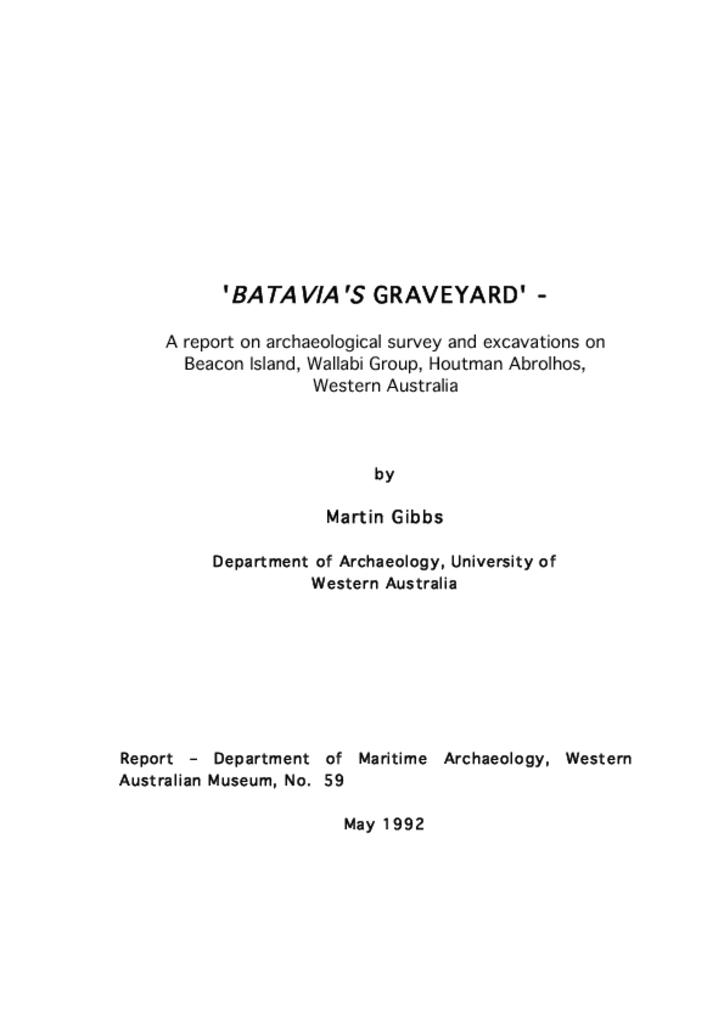Batavia's Graveyard-A report on archaeological survey and excavations on Beacon Island, Wallabi Group, Houtman Abrolhos Islands, Western Australian Dept of Archaeology, University of Western Australia
Author/s M. Gibbs
Year of publication 1992
Report Number: 59
Introduction
Beacon Island, the main camp for the survivors of the wreck of the Batavia and later the venue for a mutiny, has been the subject of various professional and non-professional archaeological excavations since the 1960s. However, these investigations have generally occurred on an ad-hoc basis, were poorly executed and documented, and in the earliest period can be dismissed as little better than treasure hunting.
The lack of significant results arising from much of this previous research, particularly with regard to understanding the subsistence and organisation of the wreck survivors, was recognised in Green and Stanbury's (1988) report on land archaeological sites in the Abrolhos island group. Implicit in the statement of archaeological significance for Beacon Island (ibid: 6) was the need to develop a long term research design which would integrate the existing data and direct future investigations towards answering meaningful questions.
From 5-13 May, 1992, staff of the Maritime Archaeology and Materials Conservation Departments of the Western Australian Museum stayed on Beacon Island while undertaking various site management and wreck analysis projects on the Batavia. The author was invited to participate in the expedition as a volunteer and undertake a programme of land-based archaeological investigations. After a preliminary examination of the available literature on past excavations and discussions with museum staff, the 'brief' for the land archaeology project was broadly determined as:
a. establish a framework for systematic archaeological survey and excavation on Beacon Island;
b. determine a means by which the existing data and artefacts from earlier excavations can be most effectively integrated into this framework; and
c. assess the archaeological potential of Beacon Island and propose avenues for future research.
Limitations on time and access to most of the known archaeologically sensitive areas of the island prevented more than a cursory inspection of some physical elements vital to the above considerations of significance and potential. However, a series of eight test pits were excavated as a means of commencing the process of systematic investigation, with the results reported below.
This report examines various aspects of both the Dutch and modern history of island use including previous professional and non-professional archaeological investigations, together with their implications for future research and management. Partly because of the restrictions described, but mostly due to time constraints on the author in his capacity as an interested volunteer, this report can only hope to provide a preliminary evaluation of the issues. Rather than provide a firm framework for future investigation, the intention is to act as a more general guide to questions and issues which might be addressed as part of a future research programme.
